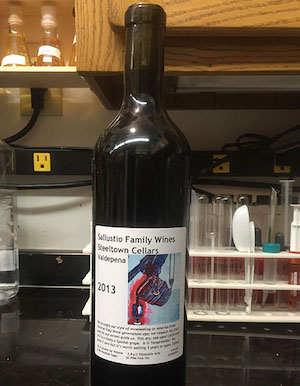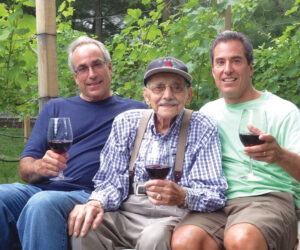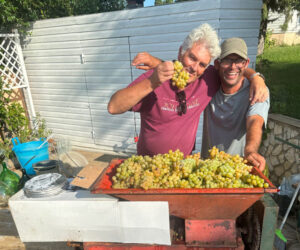 I just bottled my 2013 Valdepena. If you’re wondering why I would wait two and a half years to bottle, let me start by saying that I don’t normally do that, but I was in no hurry either. Once you know what you are doing it’s pretty easy to make more than you will drink in a year so the wine cellar fills up.
I just bottled my 2013 Valdepena. If you’re wondering why I would wait two and a half years to bottle, let me start by saying that I don’t normally do that, but I was in no hurry either. Once you know what you are doing it’s pretty easy to make more than you will drink in a year so the wine cellar fills up.
That “know what you are doing” part can be a little tricky, especially for home winemakers just getting into the hobby. If you aren’t part of a winemaking club or don’t have access to people who you know make good wine (defined as wines you really like) to ask advice from, you still have options and ways to improve your winemaking — you just need to train your tongue. Your tongue is the best piece of test equipment you will ever have once it’s trained.
For me, that tongue training started with my first Valdepena I ever made. That was about 20 years ago. I was pretty new to winemaking and was making wine from pails of juice. I had made a few reds and was doing wine by the numbers; I measured the specific gravity, pH, and titratable acidity, adjusted the acid to 5.5 g/L and voila! I was well on my way.
A funny thing happened with that Valdepena though. It behaved like no other wine I had made. The acid was higher for one thing; and the taste was just terrible.
Back then, I bottled in April. Why? Because someone told me to. Well, this wine was horrible in April. There was no way I was going to drink 25 bottles of it. I knew wine evolved in the bottle but this was falling pretty short. What to do?
Dump it or bottle it were the only options I could think of. I didn’t want to dump it. I figured I could try a bottle every couple of months and see what happened.
At two months I was certain I had wasted $10 on corks and labels. A few months later, I tried another and didn’t care for it but was kind of wondering why I hated this so much.
At eight months in the bottle I questioned whether I had mislabeled that bottle; because that bottle was pretty good.
After a year or two it was just great, better than anything else I had at the time. It was very hard to imagine how I could have thought something this good tasted so bad earlier.
That wine taught me to taste at every step and take good notes. Wine evolves in a good way if you coax it in the right direction. Good notes are what I used to train my palate. I taste, note my impression, and then run the numbers to see if they agree. If they don’t, I taste it again and try to understand why I think there is a discrepancy. By tasting and measuring I began to understand the evolution a bit better and knowing when a little touchup might help.
Winemaking is both art and science. The numbers matter but nothing trumps taste. The numbers get you close, but a well-developed palate will take you farther. My professional background is measurement and control, so just imagine how hard that was for me to write!
Winemaking is a journey, if you get to a point where you feel a little lost, stop and ask. Fellow winemakers are out there and willing to help. But you can also teach yourself how to make better wine with a little self-training.
Have a human-interest winemaking story to share as a Dry Finish column? Let us know at [email protected].






